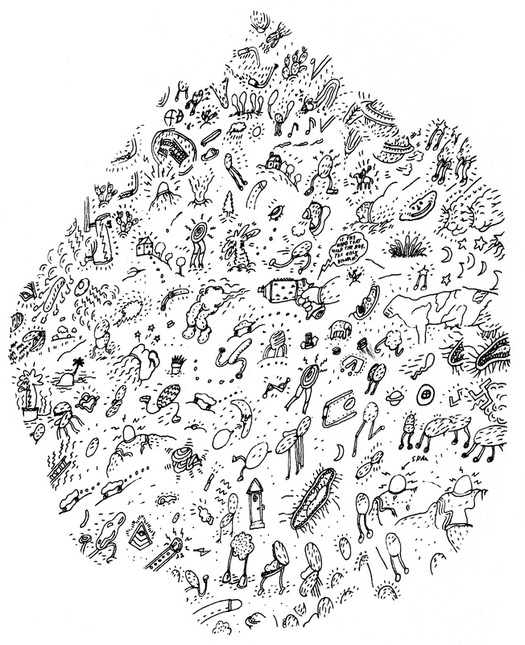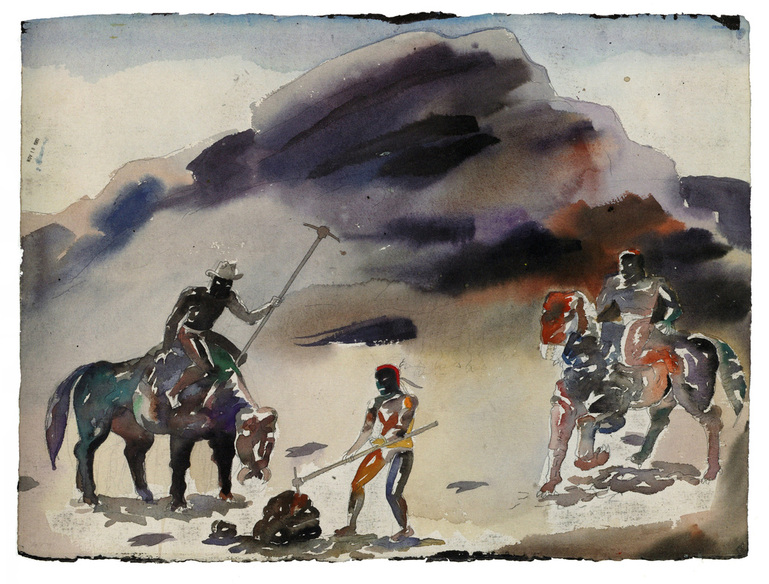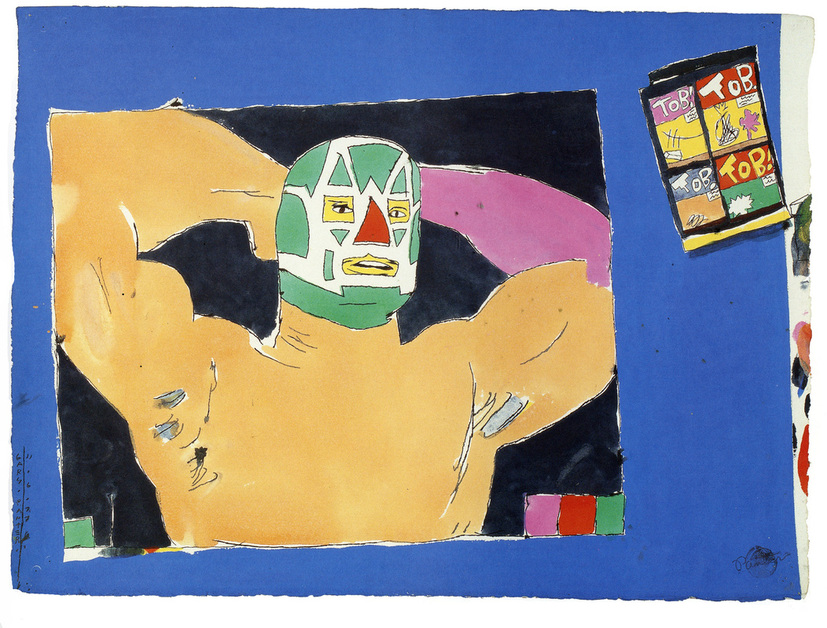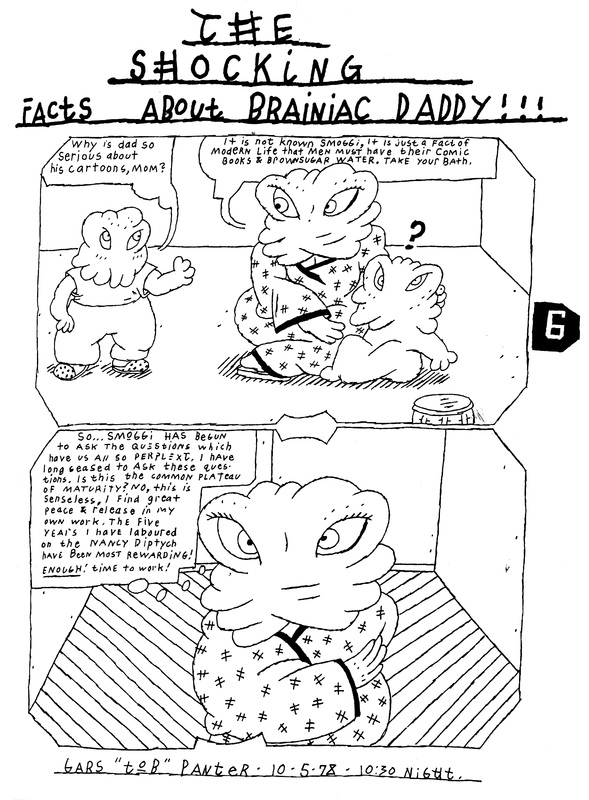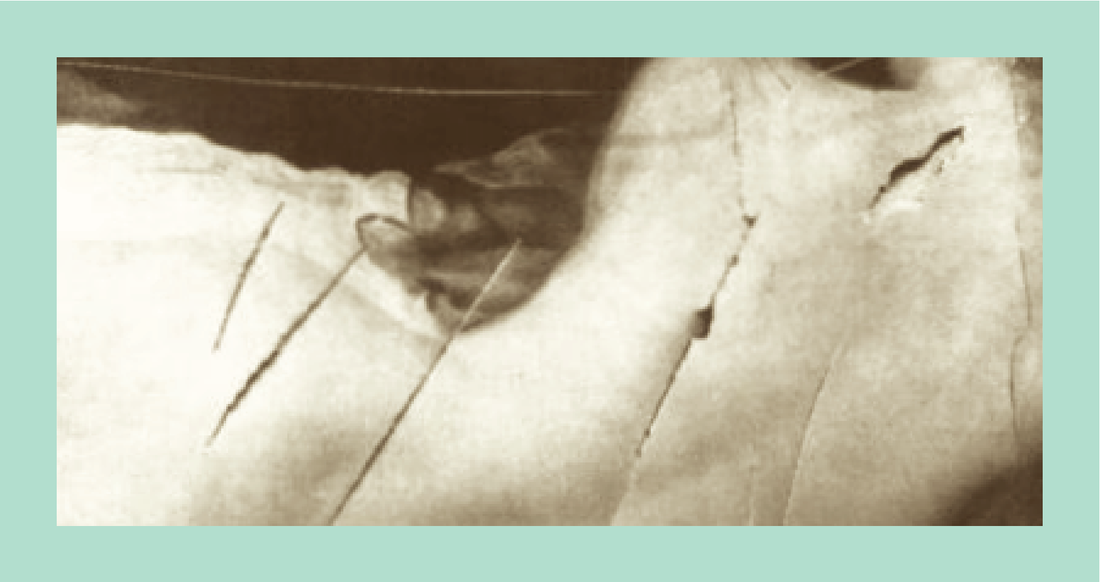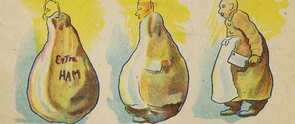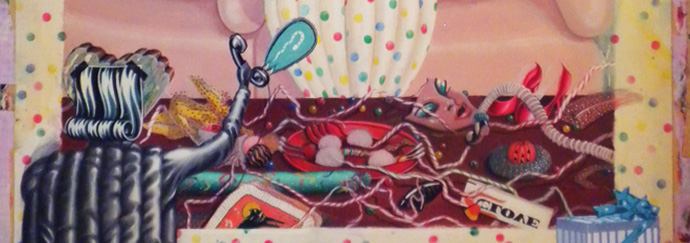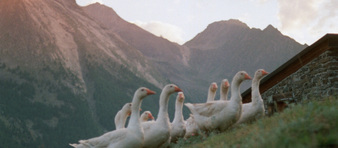INTERVIEW - ISSUE FOUR
Sassafras and Switchblades
a conversation with Gary Panter about his childhood
BY KAYLA E.
|
Untitled, 1971, ink on paper. 7 x 9 in.
|
The following is an email interview I conducted with Gary Panter after attending his lecture at Contemporary Arts Museum Houston in May 2014 (a part of Trenton Doyle Hancock: Skin and Bones, 20 Years of Drawing). Gary began the talk by suggesting that one can be a self-serving artist and still be a productive contributor to humanity, which was comforting to hear from someone who, by all accounts, has succeeded in doing so. This message was buttressed by a string of arresting anecdotes tracing his development as an artist, the most interesting of which were drawn from his childhood. At one point, for example, Gary spoke of becoming a dinosaur expert when he was a kid out of genuine fascination. This kind of dedication seems related to the impulses that drive the "self-serving artist" later in life, and it led me to wonder how other childhood influences might bleed into who we become.
-Kayla E.
Kayla E.: You said you were born in Durant, OK, and you've spoken before of how your grandparents lived in an Indian town called Talihina. What do you remember of Oklahoma?
Gary Panter: The Potato Hills and Buffalo Mountain of the Kiamishi Valley. The drive from Texas to Talihina, where my father's folks lived. McCurtain, where my Mother grew up. The funny town names - Antlers, Finley, Clayton, Snow, Albion. Electrical storms, hail, storm cellars, the smell of sassafras in the rain, the gravel on my grandparents' road, tumbled cold creek, mountains on fire at night, free range with herds of cattle on the roads, a wolf on a chain, a squirrel in a cage, a man who talked with the aid of an electrical device, tumble bugs...
|
Checking the Spoor, 1980, acrylic on paper. 22.5 x 30 in.
|
KE: What sort of influence did your grandparents have on you?
GP: My grandma was a Choctaw Indian, and grandpa was a nice guy with a crook nose who had been crippled by poison brandy - Jake Leg. He was gentle and good-humored and screamed at night in his sleep, "Don't bother to get up - we come to beat the hell out of you," and stuff like that. Everything in my family is mediated by Jesus, so Jesus was there, too. My grandmother was quiet, but when she passed away she appeared to me in a dream and gave me good advice.
KE: You spoke about living in Brownsville, TX as a child (my dad was born there!), and you mentioned that your father worked at a dime store. What do you remember of Brownsville?
GP: We lived there from 55 to 59. Brownsville was a colorful, exotic, and violent place. South Padre Island was nearby; desert landscapes, red ants, yucca, prickly pair, switchblades, shrimp boats, tubs of flailing boiling crabs, beautiful Mexican playmates and baby-sitters, my first monster movie, the drive-in movie across the field where they gave away baby donkeys as prizes, Lucha Libre posters. Across the border was Matamoros, an impoverished and desperate place where crowds of kids would ransack our car as we looked at wonderful tourist souvenirs; carved Donald and Mickey and Pepe marionettes and pull toys, babies walking around with their diapers full of poop, the ships and docks, the color-changing sign at the soda fountain, EC horror comics in a comic rack, horned toads, tarantulas, crucified frogs . . .
Tob, 1977, acrylic on paper. 22.5 x 30 in.
KE: Can you reflect a bit on your dynamic with your parents and how they influenced you early on?
GP: They were very young and fought about money and oil paint and cigarette burns on the furniture, spanked up like good Christians and took us to Church every minute. Mother wanted us to be smart and got us a subscription to the Encyclopedia Britannica Junior. She played piano and sang. Daddy was a hot-rodder, artist, jealous, violent, and ran a dime store for most of his life.
KE: You said that when you were around 8, your family moved suddenly to Sulphur Springs, TX, and that you grew up there in a trailer and taught yourself to read through Frank Baum's OZ books. Can you expand upon your experiences growing up in Sulphur Springs?
GP: Sulphur Springs was a quiet, sleepy, reserved, mostly white town with conservative culture. It was nice, bland, and pretty safe. There were some creative kids that were into astronomy, science, CB radios, plastic model kits, skateboarding, slot cars, monster mags, cars, and even poetry. I had a couple of friends who drew or were into comics and were in the marching band and stage band and played trumpet. I played guitar but was forbidden to be in a band that might play at dances, so I played in garages with friends. Sulphur Springs was a dairy town and county seat with a nice courthouse on the square. I was there in the 60s. I lay in fields and thousands of migrating black birds would land around me.
The Shocking Facts About Brainiac Daddy!!!, 1978, ink on paper. 7 x 9 in.
KE: Can you reflect on your earliest experiences with art and literature, and how they influenced your thought processes?
GP: Growing up in small towns, most of my art education came from the library, record shop, drug store newsstand, etc. I saw Jasper Johns in Newsweek and in Esquire articles in the early 60s, pictures of collectors' homes in Vogue, and finally I saw art magazines in Oklahoma City and got a subscription to Art in America. Also I would hang out at the Dallas Museum of Fine Arts at Fair Park and survey the museum book shop. I was into Modern Art very young. When I was small I made my Mother read Alice in Wonderland to me over and over. I was a slow reader but really got into reading in about the fourth grade and read Poe, Jules Verne, the Oz books, paleontology books, sci-fi collections, Ballard, Philip K. Dick, Anthony Burgess, Burroughs in college, and more and more later.
My art work is related to metafiction of the 70s, science fiction of the 60s, and satirical writings from the 18th and 19th centuries. The early novels are experimental.
Atomizado, 1986, acrylic on paper. 22.5 x 30 in.
KE: You mentioned being raised in the Church of Christ to be a preacher, and that you spent time as a missionary in Ireland during your youth. What was this like, and how did it affect you?
GP: I exaggerate in my stories. I could have been a preacher - that would've been an acceptable route to my family. I did preach sometimes on Wednesday nights along with other teens who wanted to try. I was a missionary in Belfast in the summer of 1969. I feel like I have suffered a lot over religion, but probably any rigor in my thinking comes from wrestling with that stuff. I don't have a lot of affection for religion. It was a cultish experience and still is with my family.
Cola Madnes (excerpt), 1986, ink on paper.
KE: I grew up in a mobile home in DeSoto, Texas, but I spent a lot of time with my grandparents out in Midlothian, where the nearest town was populated with a BBQ joint, a couple of churches, a fire station, and convenience store where my grandmother would take me to get ice cream confections shaped like cartoon characters with gumdrop eyes. I get very nostalgic for small-town Texas - I idealize it and yearn for it whenever I'm in New York or even Dallas. I feel uprooted and detached from this place, though, since my grandparents have long passed, and I get the feeling now that the small-town world is less than forgiving or accepting since I've moved elsewhere and make work that might be considered blasphemous. As a result, I have this distanced, voyeuristic relationship with where I came from, and I feel I can never go back to it. What is your relationship with the towns you came from? When you go back home, are you accepted back into the fold?
GP: Well, I have to watch my tongue in Texas and censor myself. I love the food. I like the various landscapes, and I enjoy going back to Sulphur Springs. It's a familiar place in my migrations. I have a lot of public school friends and college friends in the area, and I occasionally run into someone at Walmart or a Mexican restaurant. People always thought I was weird in that town. That was my reputation, but I never caused trouble so they pretty much like me. Unless we were to get into a frank discussion, which would tend to not happen.
Gary Panter was born in Oklahoma and raised in Texas. He studied painting at East Texas State University. Gary has won numerous awards, including three Emmy Awards for his production design on Pee-wee’s Playhouse, as well as the 2000 Chrysler Award for Design Excellence. He lives and works in Brooklyn.
N E X TPOETRY
|
R E L A T E DCOMICS
|
VISUAL ART
|
VISUAL ART
|
